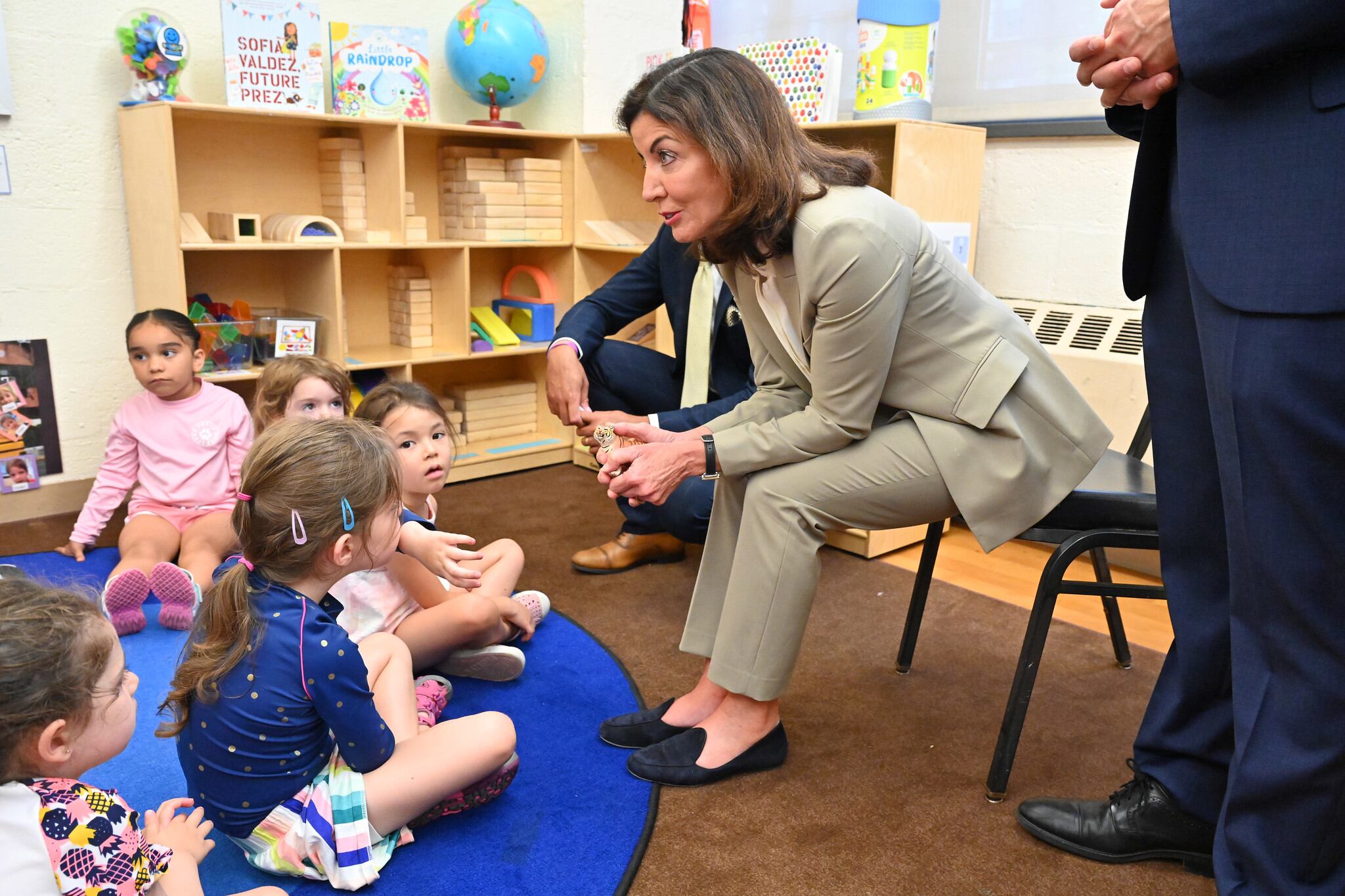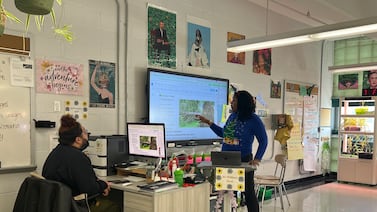New York City is expected to see nearly 3,000 new child care slots start opening this fall in areas considered “deserts” for such programs, Gov. Kathy Hochul announced Monday.
The state issued $70 million in grants to get new centers off the ground for this first round and are promising more to come, using money from federal COVID relief dollars. Of that money, nearly $17 million is going to 70 child care centers in New York City.
The grants are expected to help new child care providers in certain areas build programs by covering start-up and personnel costs, as well as with recruitment, training, and supporting staff in accessing COVID-19 vaccines, state officials said.
“Child care deserts” were defined as census tracts that have three or more children younger than 5 for each available child care slot, or no available child care slots. More than half of New York City is considered a child care desert, Hochul said.
Discussing her own experience as a young mom of having to leave her job due to lack of affordable child care, Hochul said the issue is personal for her.
“This really becomes not only an economic problem for families. It’s an economic problem for society,” she said at a press conference about the grant, held at the YM&YWHA of Washington Heights & Inwood. “The women are the ones having to stay home.”
Many have yet to return, she added.
There are roughly 1 million fewer women in the nation’s workforce compared to pre-pandemic numbers, according to a U.S. Chamber of Commerce report from April. Many left due to extreme burnout and lack of child care, the analysis found. Nearly 60% of parents were unable to find child care as tens of thousands of programs shuttered, and more than a quarter of parents couldn’t afford existing programs, the commerce chamber found in a December 2020 study.
In terms of tackling affordability, Hochul previously announced an increase to the income threshold for families eligible for subsidized child care to $83,250 for a family of four, up from about $55,500. That takes effect in August and is part of a larger $7 billion investment in the child care industry over four years.
Tara Gardner, executive director of the Day Care Council of New York, which represents about 200 privately run but publicly funded day care providers, said that change “will lift a major burden for many families.”
But Gardner said there’s still a need for more infant and toddler care as well as care beyond 3 p.m. and summer months.
Hochul acknowledged the dearth of options for nontraditional hours for many workers, such as medical staffers, restaurant workers, hotel cleaners, and bus drivers.
Of the 12,000 new slots opening over the next few months, 592 will be for infants and toddlers, while 500 will be for nontraditional hours, meaning between 7 p.m. until 6 a.m. as well as on major holidays like Labor Day, Thanksgiving, and Christmas.
New providers choosing to address those needs get a bonus award on top of their base grant.
“The child care workers are the essential workers for the essential workers,” Hochul said.
Nora Moran, director of policy at United Neighborhood Houses, an umbrella organization for many subsidized child care centers, said child care deserts have long been an issue, and this is the first time in her memory that the state was explicitly targeting these areas through its procurement process.
“It’s important to make sure families have options when it comes to accessing child care,” Moran said. “For too long families who live in deserts had limited choices and had to travel outside of their neighborhoods to access care.”
She was curious to see whether areas like Elmhurst and Corona in Queens, where many more families will be eligible for subsidized care under the new income requirements, will also get new centers.
The state is still in the process of working with the grant winners on licensing them so does not yet have a final list of new centers.
About 1,700 applicants vied for this first round of grants. The next round earmarks $30 million in federal grant funding to help existing programs in child care deserts expand their offering for day care centers as well as school-age child care programs, with incentives for those working with infants and toddlers, children with disabilities, and programs that have nontraditional hours.
Applications for that round are open through Aug. 4, according to the state.
For another application round due by Nov. 30, the state has earmarked another $343 million in federal funds to help stabilize the industry.
Amy Zimmer is the bureau chief for Chalkbeat New York. Contact Amy at azimmer@chalkbeat.org.






